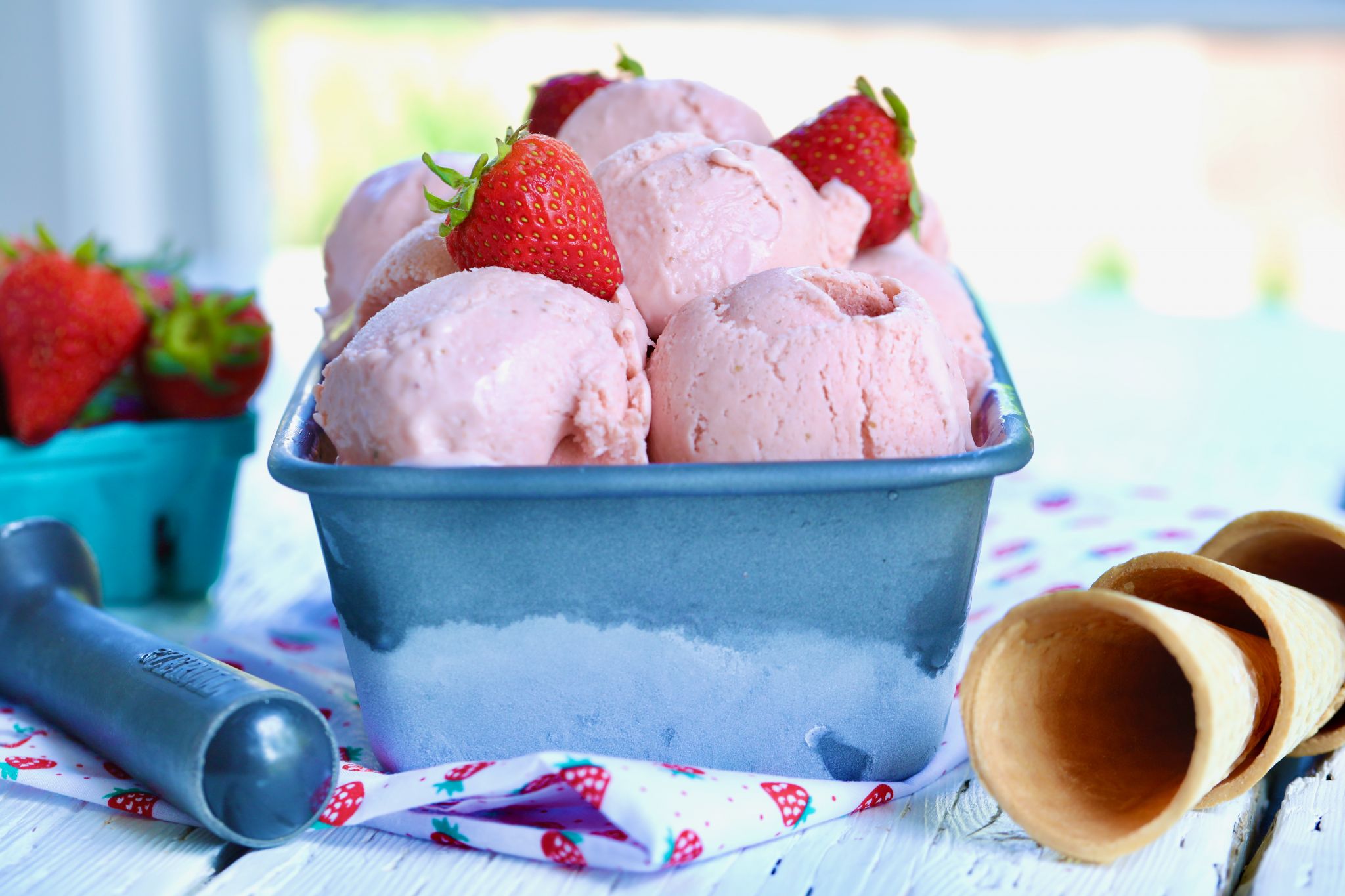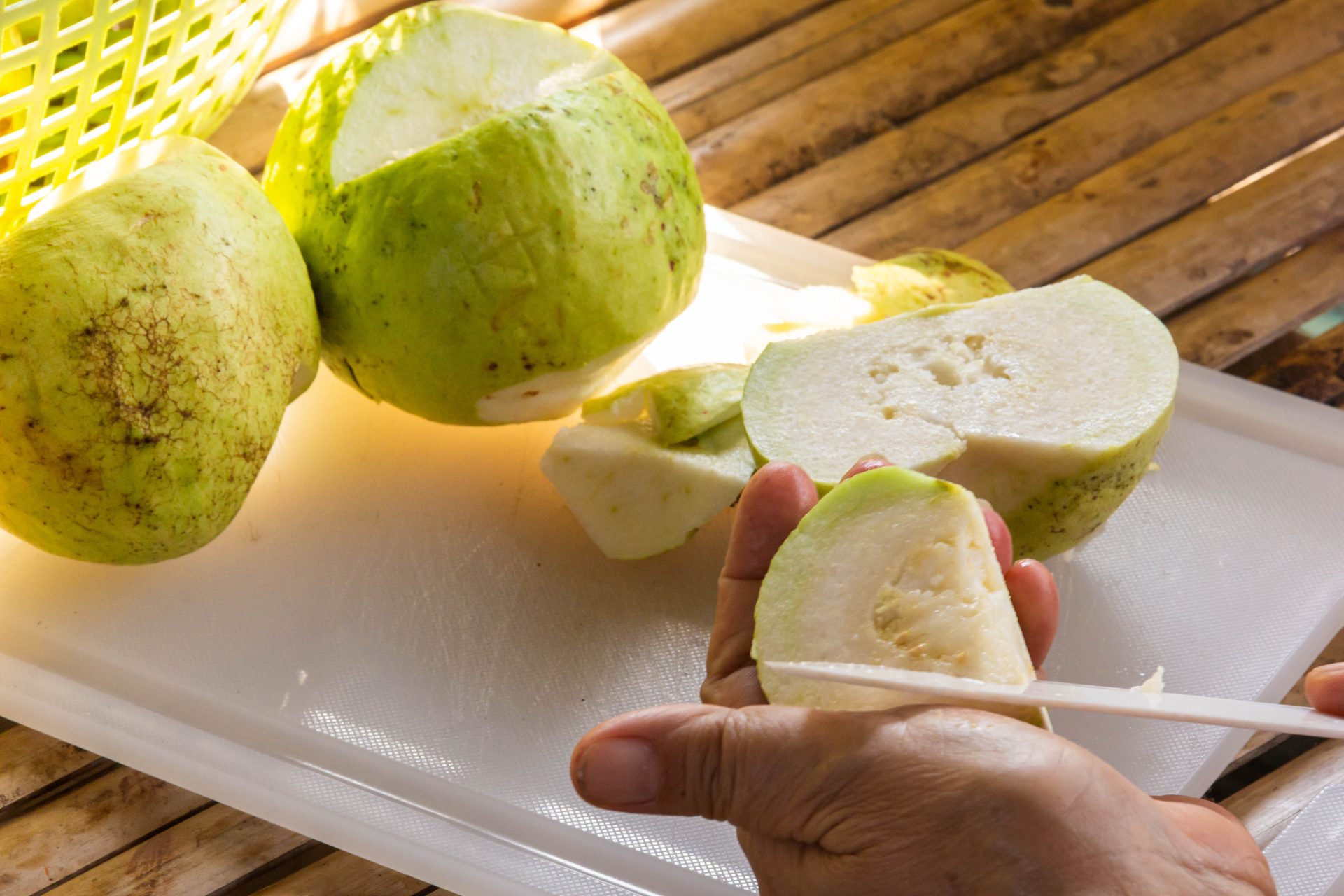

Articles
How To Store Gelato
Modified: December 7, 2023
Discover the best ways to store gelato for long-lasting freshness in this comprehensive article. Learn expert tips and tricks for preserving the flavor and texture of your favorite frozen treat.
(Many of the links in this article redirect to a specific reviewed product. Your purchase of these products through affiliate links helps to generate commission for Storables.com, at no extra cost. Learn more)
Introduction
Gelato is a delightful frozen dessert that originated in Italy and has gained popularity worldwide for its rich, creamy texture and variety of flavors. Whether you purchased gelato from a local gelateria or made it at home, you may find yourself wondering how to properly store gelato to maintain its quality and taste.
Proper storage is essential to preserve the texture and prevent freezer burn or flavor loss. In this article, we will explore the factors to consider before storing gelato, the right containers to use, and methods for storing gelato in both the freezer and the fridge.
By following these tips and techniques, you can ensure that your gelato stays fresh, flavorful, and ready to enjoy whenever you crave a cool and delicious treat.
Key Takeaways:
- Proper storage of gelato is crucial for maintaining its rich, creamy texture and preventing flavor loss. Factors like temperature, airtight containers, and mindful storage practices are key to preserving gelato’s quality.
- To maintain gelato’s quality, use airtight containers, minimize air exposure, and follow proper thawing and serving techniques. Preventing freezer burn and enjoying gelato within its shelf life ensures a delightful frozen treat.
Read more: How To Make Gelato With An Ice Cream Maker
Understanding Gelato
Gelato is often mistaken for ice cream, but there are some key differences between the two. Gelato has a smoother and denser texture compared to ice cream, thanks to its lower fat content. While ice cream is typically made with a combination of cream and milk, gelato is made with a higher proportion of milk, giving it a creaminess without the excessive fat.
Gelato is also churned at a slower speed, which incorporates less air into the mixture compared to ice cream. This results in a denser and more intense flavor profile. Additionally, gelato is served at a slightly higher temperature than ice cream, allowing the flavors to be more pronounced on the palate.
Understanding the characteristics of gelato is crucial when it comes to storing it. It’s important to preserve its texture and prevent any changes in flavor that may compromise the overall quality of the dessert.
Factors to Consider Before Storing Gelato
Before you store gelato, there are a few factors to consider to ensure its longevity and quality. One of the most important factors is the temperature at which gelato is stored.
Gelato should be kept at a temperature between -10°C and -20°C (-14°F to -4°F). It’s important to maintain a consistently cold temperature to prevent thawing and refreezing, which can cause crystals to form and affect the texture of the gelato.
Another factor to consider is the presence of air. Exposure to air can lead to freezer burn, which can affect the taste and texture of the gelato. Therefore, the storage containers should be airtight to minimize air contact.
Finally, the shelf life of gelato is affected by the ingredients used and any additional mix-ins or flavorings. Gelato with natural ingredients tends to have a shorter shelf life compared to gelato made with artificial ingredients or preservatives.
Factors to Consider Before Storing Gelato
Before storing gelato, it’s important to consider a few factors to ensure its longevity and quality. Proper storage techniques can help maintain the texture, flavor, and overall integrity of gelato, ensuring that each scoop remains enjoyable. Here are some factors to consider before storing your gelato:
- Temperature: Gelato should be stored at a temperature between -10°C and -20°C (-14°F to -4°F). This temperature range ensures that the gelato remains frozen without becoming too hard or developing ice crystals. It’s crucial to keep the temperature consistent to prevent thawing and refreezing, as this can negatively impact the texture and flavor.
- Storage Containers: Choosing the right storage containers for gelato is essential. Opt for airtight containers that prevent air from entering and damaging the gelato. Glass or plastic containers with tight-fitting lids work well. Avoid using containers that allow for excessive air circulation, as this can lead to freezer burn.
- Quantity: When storing gelato, it’s helpful to divide it into smaller portions rather than storing it all together. This allows for easier serving and prevents unnecessary exposure to air and temperature fluctuations. Divide the gelato into individual servings or smaller batches to maintain its quality.
- Date Labeling: To keep track of freshness, it’s a good practice to label the storage containers with the date of preparation or storage. This will help you know how long the gelato has been stored and when it is time to consume it.
- Avoid Overcrowding: When placing gelato containers in the freezer, avoid overcrowding the space. Leave sufficient room between the containers to allow for proper air circulation and prevent temperature fluctuations. This helps to maintain a consistent and optimal freezing environment.
- Minimal Movement: To prevent unnecessary agitation and the formation of ice crystals, minimize movement of the gelato containers once placed in the freezer. Avoid shaking or stirring the containers, as this can disrupt the texture and lead to the undesirable formation of ice crystals.
- Avoid Strong Odors: Gelato has a tendency to absorb strong odors from the freezer or other food items. To preserve the integrity of its flavors, it’s important to store gelato away from strong-smelling foods or items. Consider placing the gelato in a separate part of the freezer, away from potent-smelling ingredients.
By considering these factors, you can ensure that your gelato is stored properly and maintains its quality for an extended period. Proper temperature control, airtight containers, and mindful storage practices are key to enjoying the rich and creamy flavors of gelato whenever you desire.
Proper Storage Containers for Gelato
Choosing the right storage containers for gelato is essential to maintain its texture, flavor, and overall quality. Proper containers not only keep the gelato fresh but also prevent freezer burn and unwanted odors. Here are some recommendations for selecting the appropriate storage containers for gelato:
1. Airtight Containers: Opt for containers that have airtight seals to minimize air contact. Exposure to air can lead to freezer burn and loss of flavor. Look for containers with tight-fitting lids that create a secure seal, ensuring that the gelato remains protected and maintains its freshness.
2. Glass or Plastic Containers: Both glass and plastic containers can be used to store gelato. Glass containers are non-reactive and can preserve the flavors of the gelato effectively. Plastic containers, on the other hand, are lightweight and less likely to break, making them a convenient option for transportation and storage.
3. Single-Serving Containers: Consider using single-serving containers for portioning out gelato. These containers are ideal if you want to enjoy gelato in individual servings without compromising the quality of the remaining batch. Single-serving containers also allow for easy distribution and prevent unnecessary re-exposure of the gelato to air or temperature fluctuations.
4. Shallow and Wide Containers: It is recommended to use shallow and wide containers rather than deep ones. This shape allows the gelato to freeze evenly and quickly. It also makes it easier to scoop the gelato directly from the container when you are ready to enjoy it.
5. BPA-free Containers: If using plastic containers, opt for BPA-free options to ensure the safety and freshness of the gelato. BPA (Bisphenol A) is a chemical found in certain plastics that can leach into food and affect its quality. Choosing BPA-free containers ensures that your gelato remains free from any potential harmful substances.
6. Labeled Containers: To keep track of the storage time and flavors of individual containers, consider labeling them with the name of the gelato flavor and the storage date. This will help you easily identify and rotate your gelato stock, ensuring that you consume it within its ideal shelf life.
Remember, the quality of gelato storage containers plays a vital role in preserving the texture and flavor of the dessert. Airtight, non-reactive, and appropriately sized containers will help maintain the integrity of the gelato and ensure each scoop is as delightful as the first.
Storing Gelato in the Freezer
The freezer is the most common and effective place to store gelato for an extended period. Proper storage in the freezer helps maintain the texture, flavors, and overall quality of gelato. Here are some steps to follow when storing gelato in the freezer:
1. Transfer Gelato to Airtight Containers: After preparing or purchasing gelato, transfer it to airtight containers. Airtight containers help prevent air exposure, which can cause freezer burn and affect the taste and texture of the gelato. Ensure that the containers have a secure seal to maintain freshness.
2. Use Shallow Containers: Opt for shallow containers rather than deep ones. Shallow containers allow the gelato to freeze more quickly and evenly. It also makes it easier to scoop the gelato when it’s time to serve. Spread the gelato evenly in the container, leaving some space at the top to allow for expansion as it freezes.
3. Limit Air Contact: Once the gelato is in the containers, press a piece of plastic wrap directly onto the surface of the gelato before sealing the lid. This extra layer of protection helps minimize air contact and prevents the formation of ice crystals on the surface.
4. Choose the Right Spot: Select a spot in the freezer where the temperature is consistent. Avoid placing the gelato near the freezer door, as it is subjected to temperature fluctuations when the door is opened and closed. The back of the freezer or the middle shelf is typically the best place to store gelato.
5. Avoid Overcrowding: Ensure that the gelato containers are not overcrowded in the freezer. Leaving sufficient space around each container promotes proper air circulation and prevents the gelato from warming up due to limited airflow. Avoid stacking containers on top of each other to minimize the risk of damage and deformation.
6. Keep Freezer Temperature Consistent: It is important to maintain a consistent freezer temperature for proper gelato storage. Fluctuating temperatures can lead to thawing and refreezing, resulting in texture changes and the formation of ice crystals. Avoid frequent opening of the freezer door and check that the freezer is set to the recommended temperature for optimal gelato storage.
7. Rotate and Use Gelato Within Its Shelf Life: Gelato is best consumed within a specific shelf life to enjoy its peak flavor and texture. Rotate your gelato stock by placing newly prepared or purchased gelato at the back of the freezer and bringing older containers to the front. This ensures that you consume the gelato before it loses its quality.
By following these steps, you can store gelato in the freezer and enjoy it at your convenience without compromising its taste and texture.
Store gelato in an airtight container to prevent freezer burn and absorb odors. Place a piece of plastic wrap directly on the surface before sealing the lid to minimize ice crystal formation.
Read more: How To Store Store-Bought Bread
Preventing Freezer Burn
Freezer burn is a common issue when it comes to storing frozen foods, including gelato. It occurs when the moisture within the gelato evaporates, leading to dehydration and the formation of ice crystals on the surface. This can result in a change in texture, flavor, and overall quality of the gelato. However, there are measures you can take to prevent freezer burn and ensure your gelato stays delicious:
1. Use Airtight Containers: As mentioned before, using airtight containers is essential to prevent air exposure and freezer burn. Ensure the container’s lid provides a tight seal and minimizes the entry of air. Containers with screw-top lids or sealing mechanisms are recommended for best results.
2. Wrap Gelato Properly: Before sealing the container, consider wrapping the gelato tightly with plastic wrap or a layer of wax paper. This extra layer acts as a barrier, preventing air from coming into contact with the gelato. Ensure it is tightly pressed against the surface to minimize any gaps for air to enter.
3. Minimize Temperature Fluctuations: Frequent temperature fluctuations in the freezer can contribute to freezer burn. Avoid frequently opening and closing the freezer door unnecessarily, as this allows warm air to enter and increases the risk of freezer burn. Keep the freezer temperature consistent within the recommended range for optimal storage.
4. Avoid Overly Cold Spots: Gelato should be stored in the main compartment of the freezer, away from overly cold spots like the back wall or near the vents. These areas can cause the gelato to freeze too quickly, leading to excessive evaporation and the formation of ice crystals. Select a spot that maintains a balanced temperature throughout.
5. Use Frozen Gelato First: If you have multiple containers of gelato in the freezer, prioritize using the older ones first. The longer gelato remains in the freezer, the higher the risk of freezer burn. By adopting a “first in, first out” approach, you can ensure that each container is enjoyed at its best quality before any signs of freezer burn develop.
6. Avoid Refreezing Thawed Gelato: Once gelato has thawed, it is essential not to refreeze it. Thawed gelato is more susceptible to freezer burn due to changes in its texture and moisture content. Instead, aim to consume the gelato or use it in recipes within a reasonable time frame, following proper thawing guidelines.
7. Monitor Storage Time: Gelato, like any frozen food, has a limited shelf life. Keep track of the storage time by labeling the containers with the date of preparation or purchase. Aim to consume the gelato within the recommended time frame to avoid any quality issues due to prolonged storage.
By following these steps and taking necessary precautions, you can prevent freezer burn and maintain the desired texture, flavor, and quality of your gelato throughout its storage period.
Thawing and Serving Gelato Properly
Gelato is best enjoyed when it has a smooth and creamy texture. Properly thawing and serving gelato is crucial to maintain its desirable consistency and enhance the overall taste. Here are some guidelines to follow when thawing and serving gelato:
Thawing Gelato:
- Remove the gelato from the freezer and place it in the refrigerator. Allow the gelato to thaw gradually in the refrigerator for approximately 15-30 minutes, depending on the size and density of the container. This slow thawing process helps maintain the gelato’s optimal texture and prevents excessive melting.
- Avoid leaving the gelato at room temperature to thaw, as this can lead to uneven and rapid melting, compromising the quality of the gelato.
- Do not refreeze gelato after it has thawed. Once gelato reaches room temperature or begins to melt, it should be consumed or discarded to prevent food safety concerns.
Serving Gelato:
- Ensure that serving utensils, such as ice cream scoops or spoons, have been properly cleaned and are dry to prevent any cross-contamination or unwanted flavors.
- Scoop gelato from the top of the container, working your way down and creating even portions. This helps retain the original shape and texture of the remaining gelato.
- If serving gelato in a bowl or cone, use a scoop to create attractive rounded shapes. Serve immediately to prevent melting and maintain the ideal gelato consistency.
- If using gelato in recipes, such as for milkshakes or as a topping for desserts, slightly softened gelato can be used directly from the container. Remember to work quickly to prevent excessive melting.
- For gelato cakes or other frozen desserts, follow the specific instructions provided with the recipe or purchase. Thawing times and serving methods may vary depending on the dessert’s composition.
- After serving, promptly return any leftover gelato to the freezer. Be sure to properly seal the container to maintain its quality until the next serving.
By thawing gelato in the refrigerator and following proper serving techniques, you can enjoy gelato with its intended smoothness and flavor, making every serving a delightful experience.
Storing Gelato in the Fridge
While the freezer is the recommended place for long-term storage of gelato, there may be instances where storing gelato in the fridge is necessary, such as when you want to soften it for easier scooping. However, it’s important to note that gelato is sensitive to temperature changes and rapid melting, so storing it in the fridge requires extra attention. Here are some guidelines for storing gelato in the fridge:
1. Choose the Right Container: When storing gelato in the fridge, it’s important to use an airtight container that will keep the gelato protected from air exposure and absorb any odors in the fridge. Glass or plastic containers with tight-fitting lids work well.
2. Transfer Gelato to the Fridge: Place the gelato container in the coldest part of the fridge, often the back or bottom shelf. This ensures a more consistent temperature and reduces the risk of the gelato partially melting due to temperature fluctuations when the fridge door is opened frequently.
3. Avoid Storing Gelato for Extended Periods: Unlike the freezer, where gelato can be stored for weeks or months, it is best not to store gelato in the fridge for an extended period. The lower freezing point of gelato compared to ice cream means it can melt more quickly in the fridge, leading to texture and flavor changes.
4. Monitor the Storage Time: Pay attention to the gelato’s storage time in the fridge. Try to consume it within a day or two to ensure maximum freshness and quality. As time passes, the gelato may develop ice crystals, lose its creamy texture, and become less enjoyable.
5. Soften Gelato Before Serving: One advantage of storing gelato in the fridge is that it softens, making it easier to scoop. If the gelato becomes too hard in the freezer, you can transfer it to the fridge for a short period before serving. However, be mindful not to leave it in the fridge for too long, as it can melt and lose its original texture.
6. Re-Freeze Gelato with Caution: If you find that the gelato has softened too much in the fridge, and you want to re-freeze it, do so with caution. Rapid temperature changes can negatively affect the quality and texture of the gelato. Let it firm up in the fridge for a short time before transferring it back to the freezer.
7. Label and Rotate Gelato: If you have multiple gelato containers in the fridge, label them with dates to keep track of their storage time. Practice the “first in, first out” method and consume the gelato that has been stored the longest first, ensuring you enjoy it at its best quality.
Storing gelato in the fridge provides a temporary solution for softening, but it’s important to be mindful of the temperature and storage time to maintain the overall quality of the gelato. For longer-term storage, the freezer remains the ideal choice.
Tips for Maintaining Gelato Quality
To ensure that your gelato maintains its quality and deliciousness over time, there are several tips and practices you can follow. By implementing these tips, you can preserve the texture, flavor, and overall integrity of your gelato, ensuring a delightful experience with every scoop. Here are some tips for maintaining gelato quality:
- Proper Storage: As mentioned earlier, storing gelato in the freezer is the best option for long-term storage. Use airtight containers to prevent air exposure and freezer burn. Keep the temperature consistent and avoid overcrowding the freezer to maintain optimal freezing conditions.
- Labeling and Rotation: Label the containers with the date of preparation or purchase to keep track of storage time. Practice the “first in, first out” method, consuming gelato in the order it was stored, to ensure you enjoy it at its freshest.
- Avoid Temperature Fluctuations: Minimize temperature fluctuations by keeping the freezer door closed and limiting unnecessary opening. Rapid temperature changes can lead to the formation of ice crystals and affect the texture and taste of the gelato.
- Preventing Air Exposure: Air exposure can cause freezer burn and affect the gelato’s quality. Press a piece of plastic wrap directly onto the gelato’s surface before sealing the container to minimize air contact and prevent ice crystals from forming.
- Practice Gentle Thawing: When thawing gelato, do it gradually and at a controlled pace. Thaw the gelato in the refrigerator to maintain its texture and prevent rapid melting, which can negatively impact the overall quality.
- Serve Immediately: Serve gelato immediately after thawing or scooping to enjoy its ideal consistency. Leaving gelato out at room temperature can lead to melting and loss of texture.
- Clean Scooping Utensils: Use clean and dry scooping utensils when serving gelato to prevent cross-contamination and preserve its flavors. Moisture from previous servings can affect the taste and texture of the gelato.
- Store Gelato Separately: Gelato can absorb strong odors easily. Store gelato separately from potent-smelling foods in the freezer to preserve its flavor and avoid any unwanted aromas.
- Enjoy Within Shelf Life: Gelato is best enjoyed within its recommended shelf life. Consume gelato within the suggested time frame to ensure its optimal texture, flavor, and overall quality.
- Experiment with Flavors: Keep the gelato experience exciting by trying different flavors. Explore new combinations or seasonal variations to continue delighting your taste buds with the wide variety of gelato options available.
By implementing these tips, you can maintain the quality of your gelato for a longer period, ensuring that each scoop is as delicious and satisfying as the first. Taking care during storage, thawing, and serving will help you enjoy the exquisite flavors of gelato to the fullest.
Read more: How To Store Basil From Grocery Store
Conclusion
Gelato is a delightful frozen treat that deserves proper care to maintain its texture, flavor, and overall quality. By following the tips and techniques outlined in this article, you can ensure that your gelato stays fresh, delicious, and ready to be savored whenever you desire a cool and indulgent dessert.
Understanding the characteristics of gelato, such as its lower fat content, slower churning process, and slightly higher serving temperature, is essential when it comes to storing it properly. Factors like temperature, storage containers, air exposure, and shelf life play key roles in preserving the integrity of gelato.
Whether you choose to store gelato in the freezer or the fridge, using airtight containers, minimizing air exposure, and following proper thawing and serving methods are crucial steps to maintain its quality. Freezer burn can be prevented by using appropriate containers, minimizing temperature fluctuations, and consuming gelato within its recommended shelf life.
Remember to label and rotate your gelato stock, enjoying the oldest containers first to ensure optimal freshness. Keep scooping utensils clean and dry to avoid flavor contamination, and store gelato separately to prevent it from absorbing strong odors in the freezer.
Ultimately, the goal is to enjoy gelato at its best – with a creamy texture, rich flavors, and a satisfying experience with every scoop. By implementing these tips for maintaining gelato quality, you can ensure that your gelato remains a delightful indulgence, perfect for any occasion.
So, whether you have store-bought gelato or freshly-made gelato from your own kitchen, take the necessary measures to preserve its quality. With proper storage, careful thawing, and mindful serving practices, you can enhance the longevity and enjoyment of this beloved frozen dessert.
Frequently Asked Questions about How To Store Gelato
Was this page helpful?
At Storables.com, we guarantee accurate and reliable information. Our content, validated by Expert Board Contributors, is crafted following stringent Editorial Policies. We're committed to providing you with well-researched, expert-backed insights for all your informational needs.














0 thoughts on “How To Store Gelato”